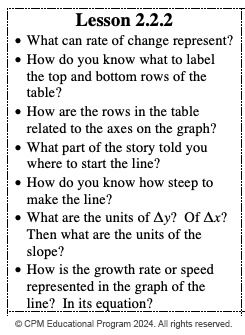
According to research, teachers make approximately 1,500 educational decisions every day. For a little more perspective, in a six-hour school day, this amounts to four educational decisions every minute. While this is already a substantial number of decisions, the reality might be much higher when you factor in other duties such as lesson-planning and grading.
Many of these decisions can be pre-planned:
- What questions will I ask if students get stuck?
- How will I promote student collaboration?
- How will I launch and close the lesson?
Now think about the moments that we have not anticipated. What do we do when a decision needs to be made in the moment, and what do our responses and reactions in these moments reveal about us?
Dr. Deborah Loewenberg Ball, professor at the Marsal School of Education at the University of Michigan, calls these moments discretionary spaces. Simply put, discretionary spaces are the micro moments in which decisions are made. These moments are not necessarily dictated by the curriculum, school policies, or what we had intended to have happen. Instead, discretionary spaces are the unplanned moments when a decision or judgment call needs to be made. Our response(s) in these discretionary spaces provide instances that not only reveal our beliefs and biases, but provide us with opportunities for reflection as well.
Teachers have an enormous amount of discretion in the classroom, and the decisions teachers make can have major impacts on students. Being aware of discretionary spaces in our classrooms allows teachers to elevate student voices and mathematical status. The actions and inactions we choose to take or not take during these micro moments shape our classroom culture and students’ identities in it.
Consider the following scenarios. How can teachers use their influence during these moments to uplift students’ mathematical identity and agency? How would you react and what do your reactions reveal about your beliefs and biases?
- While circulating the classroom, you approach a group to check on their progress. You notice that one student is working independently and the other members are doodling in their notebooks.
- You are observing a class and the teacher is leading a class discussion. After the teacher poses a question to the class, a student begins to answer but is cut off by the teacher.
- You are observing a class where a teacher sees a team working productively on a task and chooses not to interact, continuing on their circulation path.
These are but a few examples of the types of discretionary spaces that we can encounter on a daily basis. It is important to note that in a discretionary space, inactions are still actions. For example, if a teacher decides to not utilize a pre-planned Study Team and Teaching Strategy (STTS), what impact does that have on equitable access for students? In other words, by choosing NOT to use the STTS, what are the impacts of this “inaction”?
As we become more aware of discretionary spaces in our classrooms, we also need to be mindful about the power our actions and inactions will have on our students and classroom culture. By choosing to not intervene in a moment, the teacher is still demonstrating their beliefs about student ability, student identity, and sharing of math authority.
Given all the decisions that need to be made in a class period, CPM offers a wide range of materials and resources that support teachers in combating inequities and making the most of discretionary spaces. One main support that teachers can utilize is the Teacher Notes of each lesson. Consider the excerpt from Core Connections Algebra:

In this lesson, it is suggested that the teacher facilitate a Think-Ink-Pair-Share. This particular STTS comes on Day 2 of the lesson, after students have already engaged with content related to speed and distance. The Resource Page for this lesson challenges students to consider an application of what was covered on Day 1. By utilizing a Think-Ink-Pair-Share, the teacher raises student voices, giving them the opportunity to individually consider the graphs and record their own thoughts before sharing with others. The “pair and share” portion of the STTS creates groups that are small enough for students to feel safe in sharing their thoughts while still obtaining feedback and promoting collaboration. Of course, this is not the only STTS that could work in this discretionary space. Remember, the purpose of the Teacher Notes is not to give you a fixed lesson plan but rather a malleable framework from which you can facilitate the lesson using equitable practices.
Pocket Questions are another great resource to help you anticipate discretionary spaces in your classroom. Also found in the Teacher Notes, Pocket Questions provide a bank of questions teachers can ask to move students’ thinking forward during the lesson. These open-ended questions allow teachers to share math authority and mobilize knowledge within the room without disseminating all necessary information. The provided Pocket Questions, as in the example, can also give insight into possible discretionary spaces that may arise during the lesson. As you read the Pocket Questions, consider what discretionary spaces may occur during this lesson.

How teachers prepare for discretionary spaces in their classrooms can have a considerable impact on students, their learning, and their math identities. Planning for these moments does not have to become a burden or “another thing,” but can easily be incorporated into CPM’s recommended lesson-planning routine. Be sure that you are reviewing the Teacher Notes for each lesson, keeping in mind how CPM’s embedded resources, such as STTS and Pocket Questions, can support your decision making in discretionary spaces. It may also be beneficial to consider what actions (or inactions) will happen in the in-between moments of your lesson plan. Effective lesson planning promotes awareness of discretionary spaces and methods of responding with practices that promote equitable instruction and student voice.
In conclusion, the recognition and thoughtful navigation of discretionary spaces are paramount to fostering positive math identities, raising student voices, and creating an equitable classroom. By acknowledging the power we hold in these spaces, we open the door to intentional and equitable decision-making. The resources provided by CPM, such as Teacher Notes, STTS, and Pocket Questions, offer valuable tools to guide us through these critical junctures. Raising our awareness of discretionary spaces enables us to seize opportunities to develop more equitable practices that support all learners.
To learn more about discretionary spaces, consider registering for CPM’s Site-Based Leadership Program.


